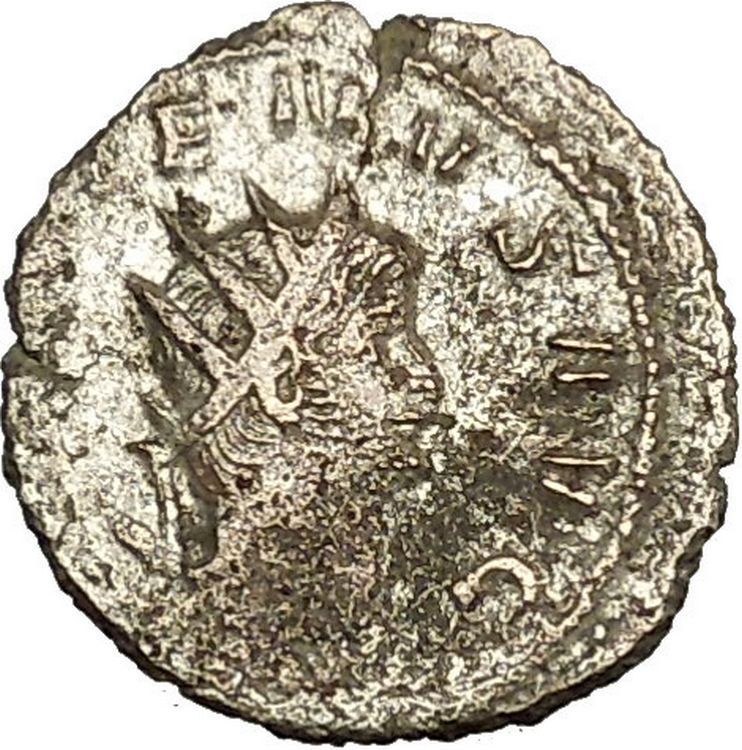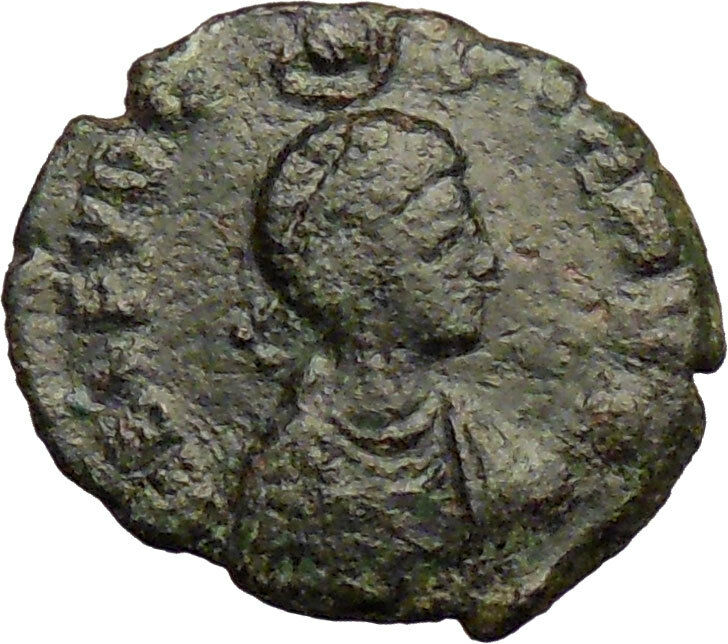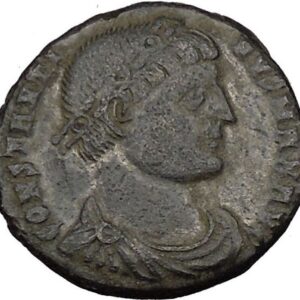|
Julia Mamaea
– Roman Empress wife of Emperor Severus
Alexander 222-235 A.D. –
Bronze Sestertius 29mm (21.03 grams) Rome mint: 226 A.D.
Reference: RIC 708; Cohen 8; Sear 8236
IVLIA MAMAEA AVGVSTA, diademed & draped bust right.
VESTA S-C, Vesta standing left, holding Palladium & sceptre.
You are bidding on the exact item pictured,
provided with a Certificate of Authenticity and Lifetime Guarantee of
Authenticity.
In Roman mythology, Fecunditas (Latin: “fecundity,
fertility”) was the goddess of fertility. She was portrayed as a matron,
sometimes holding a cornucopia or a hasta pura, with children in her arms or
standing next to her. Nero erected a temple to Fecundity, on the occasion of a
daughter being born to him by Poppaea (Tacit xv 23). And the adoration of this
divinity, once established at Rome, became a frequent subject of allusion and
typification on the coins of succeeding empresses. It has been thought that,
under this name, worship was paid to Juno. The priest of Fecundity was called
Lupercus; and to him one of the artful and indecent superstitions of paganism
ascribed the power of rendering women fertile, by strapping them, while in a
state of nudity, with thongs made of goat skin! On coins of the Augustae,
Fecundity appears as a matron, clothed in the stola, sometimes standing with the
hasta pura in her right hand, and supporting an infant in her left; sometimes
with a cornucopiae in her left hand, and before her a child, to which she
extends her right hand. On others she is seated, with children in her lap, or
standing at each side of her; sometimes with one on each arm.
The cornucopia (from Latin cornu copiae) or
horn of plenty is a symbol of abundance and nourishment, commonly a large
horn-shaped container overflowing with produce, flowers, nuts, other edibles, or
wealth in some form. Originating in
classical antiquity
, it has continued as a
symbol in
Western art
, and it is particularly associated
with the
Thanksgiving
holiday in
North America
.

Allegorical
depiction of the Roman
goddess
Abundantia
with a cornucopia, by
Rubens
(ca. 1630)
In Mythology
Mythology
offers multiple
explanations of the origin
of the cornucopia.
One of the best-known involves the birth and nurturance of the infant
Zeus, who had to be hidden from his devouring father
Cronus
. In a cave on
Mount Ida
on the island of
Crete
, baby Zeus was cared for and protected by
a number of divine attendants, including the goat
Amalthea
(“Nourishing Goddess”), who fed him
with her milk. The suckling future king of the gods had unusual abilities and
strength, and in playing with his nursemaid accidentally broke off one of her
horns
, which then had the divine power to
provide unending nourishment, as the foster mother had to the god.
In another myth, the cornucopia was created when
Heracles
(Roman
Hercules
) wrestled with the river god
Achelous
and wrenched off one of his horns;
river gods were sometimes depicted as horned. This version is represented in the
Achelous and Hercules
mural painting
by the
American Regionalist
artist
Thomas Hart Benton
.
The cornucopia became the attribute of several
Greek
and
Roman deities
, particularly those associated
with the harvest, prosperity, or spiritual abundance, such as personifications
of Earth (Gaia
or
Terra
); the child
Plutus
, god of riches and son of the grain
goddess Demeter
; the
nymph
Maia
; and
Fortuna
, the goddess of luck, who had the power
to grant prosperity. In
Roman Imperial cult
, abstract Roman deities who
fostered peace (pax
Romana) and prosperity were also depicted with a cornucopia,
including Abundantia
, “Abundance” personified, and
Annona
, goddess of the
grain supply to the city of Rome
.
Pluto
, the classical ruler of the underworld in
the
mystery religions
, was a giver of agricultural,
mineral and spiritual wealth, and in art often holds a cornucopia to distinguish
him from the gloomier Hades
, who holds a
drinking horn
instead.
Modern depictions
In modern depictions, the cornucopia is typically a hollow, horn-shaped
wicker basket filled with various kinds of festive
fruit
and
vegetables
. In North America, the cornucopia
has come to be associated with
Thanksgiving
and the harvest. Cornucopia is
also the name of the annual November Wine and Food celebration in
Whistler
, British Columbia, Canada. Two
cornucopias are seen in the
flag
and
state seal
of
Idaho
. The Great
Seal
of
North Carolina
depicts Liberty standing and
Plenty holding a cornucopia. The coat of arms of
Colombia
,
Panama
,
Peru and
Venezuela
, and the Coat of Arms of the State of
Victoria, Australia
, also feature the
cornucopia, symbolising prosperity.
The horn of plenty is used on body art and at Halloween, as it is a symbol of
fertility, fortune and abundance.
-
Base of a statue of
Louis XV of France
Julia
Avita Mamaea (14 or 29 August after 180–235) was the second daughter of
Julia
Maesa
, a powerful
 Roman woman of Syrian Roman woman of Syrian
Arab
origin and Syrian noble
Julius Avitus
. She was a niece of empress
Julia
Domna
and
emperor
Septimius Severus
and sister of
Julia Soaemias
. She was born and raised in
Emesa
(modern
Homs
, Syria
).
Julia’s first husband was a former consul (whose name is unknown) who died.
Julia married as her second husband Syrian
Promagistrate
Marcus Julius Gessius Marcianus
. Julia bore Marcianus two children, a
daughter called Theoclia (little is known of her) and a son, Marcus Julius
Gessius Bassianus Alexianus, later emperor
Alexander Severus
. Unlike her sister, Julia Mamaea was reported to be a
virtuous woman, never involved in scandals.
As a member of the Imperial Roman family, she watched closely the death of
her cousin Caracalla
and the ascent to power of her nephew
Elagabalus
,
the oldest grandson of Julia Maesa and her choice to the throne. Eventually
Elagabalus and his mother Julia Soaemias proved incompetent rulers and favour
fell on Alexander, Julia’s son. He became emperor in 222, following Elagabalus’
murder by the
Praetorian Guard
. Julia and her mother became regents in the name of
Alexander, then 14 years old. Upon adulthood, Alexander confirmed his esteem for
his mother and named her consors imperii (imperial consort). It was in
this condition that she accompanied her son in his campaigns: a custom started
with Julia Domna
. Thus she travelled to the East, for the campaign against
Parthia
and
to the Germania provinces. Julia Mamaea was with Alexander in Moguntiacum
(modern Mainz
),
capital of
Germania Superior
, when he was assassinated by his troops. She suffered the
same fate.
|






 Roman woman of Syrian
Roman woman of Syrian


